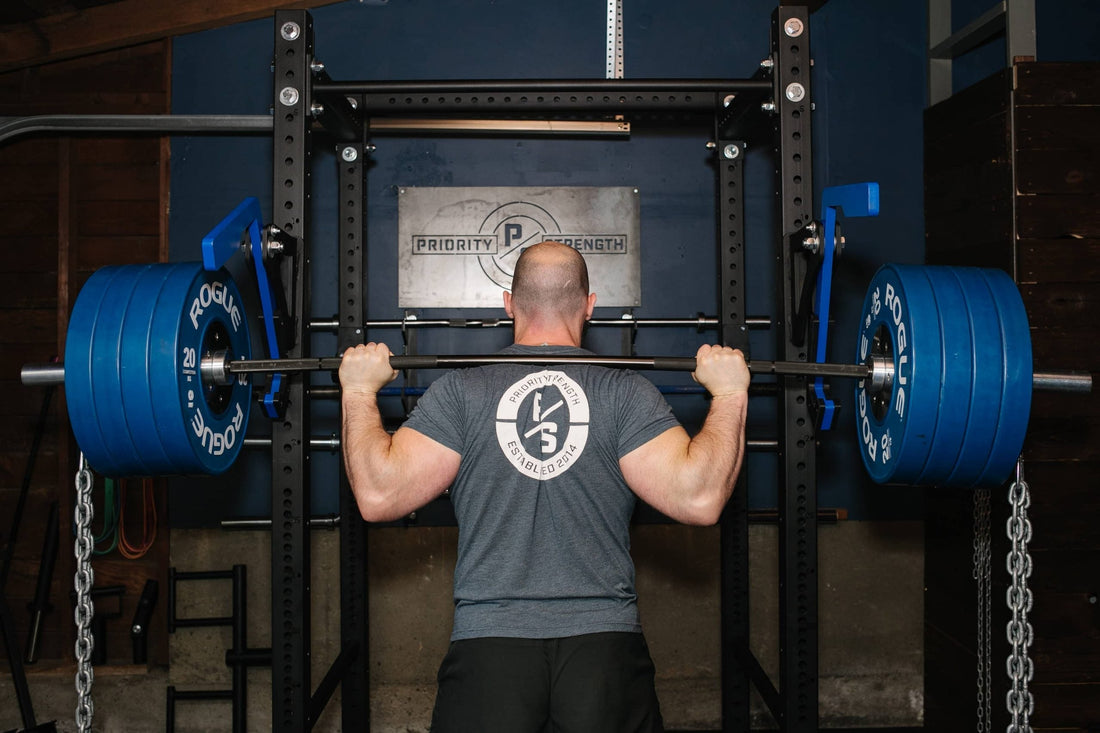
Tempo Training for Powerlifters: The Secret to Stronger Lifts and Bigger Muscles
As a powerlifter, you're obsessed with moving the most weight possible. But have you ever considered how you move the weight? Tempo training, the practice of intentionally controlling the speed of each phase of a lift, is a powerful but often underutilized tool. By manipulating the eccentric (lowering), isometric (pause), and concentric (lifting) phases, you can build muscle, improve technique, and develop a new level of control that translates directly to bigger PRs. This guide will explain the what, why, and how of tempo training for powerlifters.

Understanding Tempo Prescription
Tempo is typically written as a series of four numbers, for example, 4-1-2-1. Each number corresponds to a phase of the lift in seconds:
- 4 (Eccentric): The time it takes to lower the weight (e.g., the descent of a squat).
- 1 (Isometric - Bottom): The pause at the bottom of the movement.
- 2 (Concentric): The time it takes to lift the weight.
- 1 (Isometric - Top): The pause at the top/lockout.
A "normal" rep might be a 1-0-1-0 tempo. A tempo prescription like 4-1-2-1 forces extreme control and discipline.
The Benefits of Tempo Training for Powerlifters
- Increased Time Under Tension (TUT) for Hypertrophy: By slowing down the eccentric phase, you dramatically increase the time your muscles are under load. This increased TUT is a well-established driver of muscle growth (hypertrophy), as confirmed by numerous sports science studies. More muscle mass gives you a higher potential for strength.
- Improved Motor Control and Technique: You cannot cheat a slow rep. Tempo training forces you to maintain perfect positioning and tightness throughout the entire lift. It exposes technical flaws instantly. If you lose your back position during a slow eccentric squat, you will feel it immediately.
- Strengthens Tendons and Connective Tissues: Slow, controlled eccentrics place a healthy stress on tendons and connective tissues, potentially making them more resilient and reducing injury risk over the long term.
- Builds Strength in Weak Positions: A deliberate pause at the bottom of a squat or bench press (an isometric hold) builds strength and stability in that specific range of motion, helping to smash through sticking points. This is the principle behind the effectiveness of paused lifts.
How to Incorporate Tempo Training
Tempo training is best used with submaximal weights during accessory work or as a primary variation in a hypertrophy or technique-focused block. You will need to significantly reduce the weight on the bar.
Tempo Squats
- Prescription: Try a 4-2-1-0 tempo.
- Why: A slow 4-second descent builds incredible control and stability. The 2-second pause in the hole annihilates the stretch reflex and builds strength from the bottom. The "1" for the concentric phase still implies an explosive intent to stand up as fast as possible.
- Programming: Use as a primary squat accessory for 3-4 sets of 4-6 reps.
Tempo Bench Press
- Prescription: Try a 3-1-X-0 tempo. (X means "explosive" - lift as fast as possible).
- Why: Controlling the bar for a 3-second descent reinforces a stable bar path and proper elbow tuck. The pause builds strength off the chest, and the explosive concentric phase trains rate of force development. This is a technique praised by many coaches for its ability to "own" the movement, including those at T-Nation.
- Programming: A great secondary bench movement for 3-5 sets of 5-8 reps.
Tempo Deadlifts (Eccentric Focus)
- Prescription: 1-0-4-0 (Focus on a slow, controlled 4-second negative).
- Why: While the deadlift in competition has no eccentric requirement, training a slow negative builds tremendous hamstring and glute strength, improves back stability, and teaches you how to maintain position when lowering the bar. This is a powerful hypertrophy tool.
- Programming: Use as an accessory after your main deadlift work. Perform 2-3 sets of 4-6 reps.
Tempo training forces you to respect the weight and master every inch of the movement. It's a humbling but incredibly effective method for building muscle, refining technique, and developing the control needed to handle maximal loads safely. If your progress has stalled, stop just thinking about how much you're lifting and start paying attention to how you're lifting it.
Have you used tempo training in your program? Share your favorite tempo prescription in the comments!








